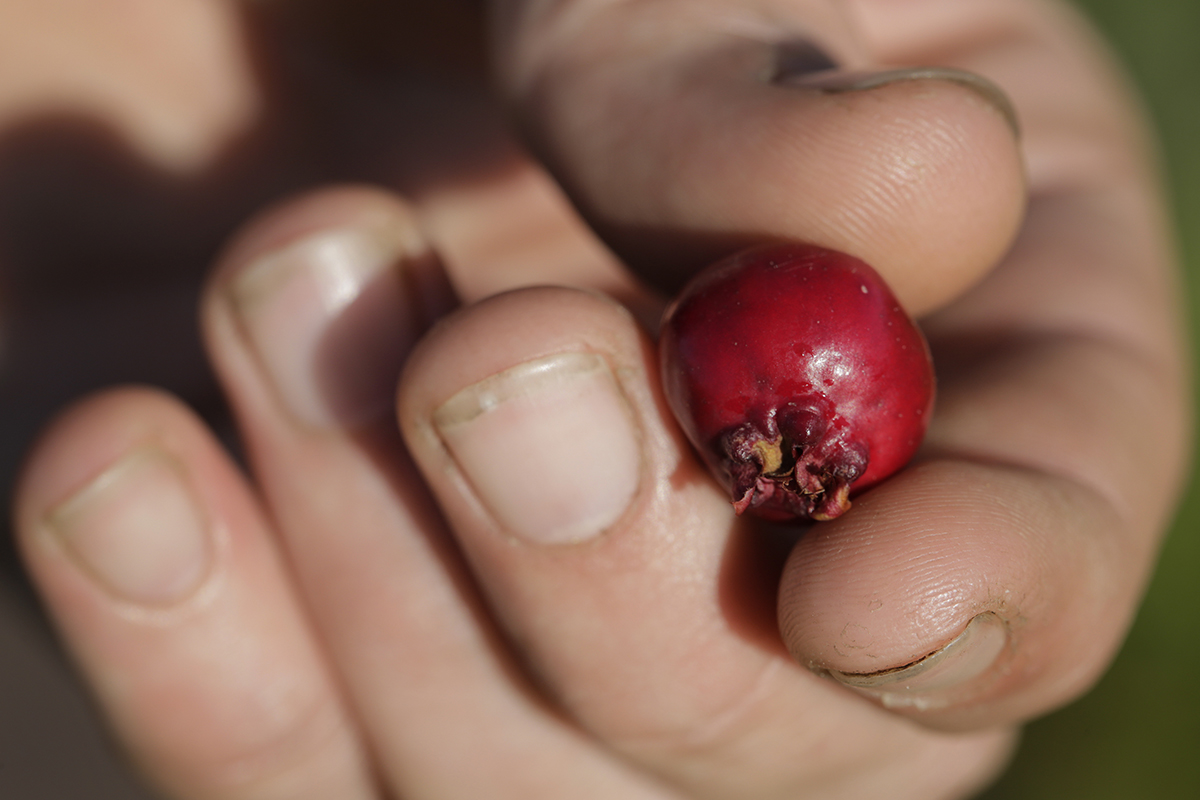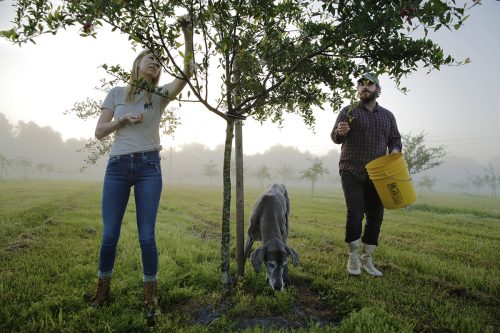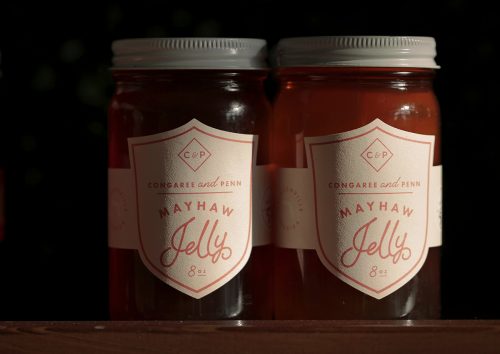
Photo by Bob Self
What Is a Mayhaw?
The tart tree fruit that looks like a cross between a cranberry and a crabapple grows wild in the swamps and sloughs of the Gulf states.

Lindsay and Scott Meyer are joined by their Great Dane Lula, who has a taste for berries, as they pick mayhaw from trees at sunrise at Congaree and Penn farm and mills. Photo by Bob Self
When Scott Meyer was 5, his father planted an experimental mayhaw orchard in Florida, just miles from the current operation, and his Louisiana-born mother used the fruit to make jelly. “I remember that jelly just being phenomenal,” Scott said.
When Scott and his wife, Lindsay Moore Meyer, created Congaree and Penn, they planted a 5,000-tree mayhaw orchard with the idea of jump-starting commercial cultivation.
“Scott’s baby is the mayhaws,” Lindsay said.
During antebellum times, mayhaw jelly was typically served with wild game, including venison, duck and turkey. In the 1800s, farmers began to cultivate the trees. Today, the fruit can be harvested in April or May, then frozen until processed for retail sale.
Mayhaws have a rosy interior with white pulp and a few seeds. The pulp tends toward the sour and astringent, usually requiring a fair amount of sugar before being turned into jellies, syrups and fresh-pressed juices.

Mayhaw jelly for sale at Congaree and Penn farm and mills. The Meyers own and operate the farm where they have created a national following for their unique rice and fruit products. Photo by Bob Self
“It’s a strong juice, and it does have a lot of health benefits,” Scott said, “so I think that we will eventually sell a mayhaw juice.”
When heat-treated or frozen, the juice will remain shelf-stable for over a year.
Congaree and Penn grows a dozen varieties of mayhaw. Eight are native selections, and the rest are hybrids, part of a breeding program Scott established to develop stronger varietals.
Congaree and Penn sells a mayhaw shrub, the term for a drinking vinegar dating to Colonial times. The shrub is commonly used in the 21st century for nonalcoholic sodas and mixers in craft cocktails. When available, a 16-ounce bottle sells for $20.
Read more about Lindsay and Scott Meyer’s Congaree and Penn.

Your comments are welcome
1 Comment
This is a Chinese fruit called “shan zha”. You can eat fresh hawthorn with a little sour taste. In China, dried hawthorn can be boiled and drunk. Its function is to help reduce high blood pressure, high cholesterol and lose weight. This is also a traditional Chinese medicine that can help people with indigestion solve their problems. This is a very good fruit. In northern China including Beijing, this fruit is used to make candied hawthorn and sugar-coated hawthorn that people like to eat.
Related reading:
Alumni, Features
Scott and Lindsay Meyer Rely on History and Social Media at Rice Farm
In Florida, farmstead Congaree and Penn revives the heirloom grain.
Features
Congaree and Penn Shrimp and Asparagus Risotto
Chef Trey Hartinger brings Florida flavors to life with a delicious recipe.
Features
Food Justice Class Shines Light on Hunger, Nutrition
Community gardening, interviews and delivering nourishment to food deserts are all part of the curriculum.